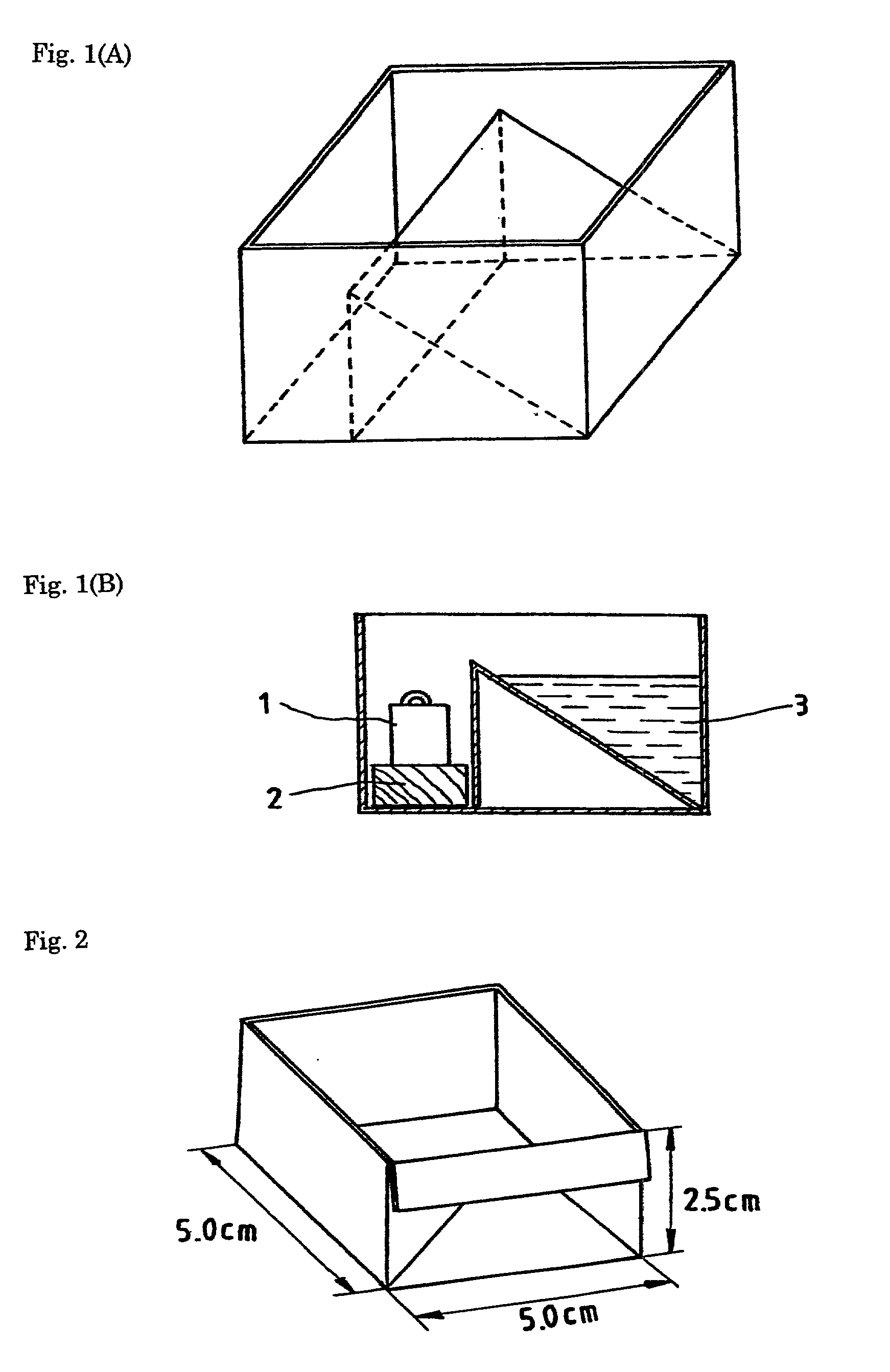Composition and method for treating a porous article and use thereof
a technology of porous articles and compositions, applied in the field of composition and method of treating porous articles, can solve the problems of unstable pressurization treatment of many enzymes, and achieve the effects of improving the cation exchange ability of porous articles, imparting or improving anion exchange ability, and improving ion exchanging properties
- Summary
- Abstract
- Description
- Claims
- Application Information
AI Technical Summary
Benefits of technology
Problems solved by technology
Method used
Image
Examples
example 2
Cultivation and Concentration
[0123] In a cultivation tank containing 3-liter medium consisting of 0.5% glucose, 0.1% NaNO.sub.3, 1.34% Na.sub.2HPO.sub.4.12H.sub.2O, 0.3% KH.sub.2PO.sub.4, 0.1% NaCl, 0.2% peptone, 20 ppm yeast extract, 0.01% MgSO.sub.4.7H.sub.2O, and 0.1 mM CuSO.sub.4, adjusted to pH 8 by addition of 10% NaOH, was inoculated Myrothecium roridum SD3002 (Accession No. FERM BP-5523) and cultivation was continued at 28.degree. C. for 3 days with shaking. After the cultivation, the culture medium was centrifuged at 4.degree. C. to obtain 2.5 liters of cell-free culture broth.
[0124] Then, an aliquot of the culture broth was concentrated by Minitan ultrafiltration system (Millipore Co.) using Minitan Filter Packet (CAT. NO.: PTGCOMP04, Millipore Co.) as a fraction of a molecular weight of 10,000 or more.
[0125] Further, this fraction was dialyzed against 200 ppm NH.sub.4HCO.sub.3 and then freeze-dried to obtain a crude purification product as a freeze-dried product. The free...
example 3
Treatment of Wood
[0126] A reaction mixture for treating wood containing 30 ppm of the freeze-dried product (10 U / mg) described in Example 1, 5% of commercially available lignosulfonic acid (LSA), 0.04 M copper (II) sulfate, and 0.08 M ethylenediamine (EDA) was prepared, to which were dipped Japan cedar blocks (3 cm .times.3 cm.times.2 cm, butt end: 3 cm.times.3 cm) under reduced pressure for impregnation treatment. The pH was adjusted with sodium hydroxide or sulfuric acid.
[0127] The reduced pressure impregnation operation was performed by a handy method, i.e., by applying a reduced pressure of 650 to 700 mmHg for 1 hour after dipping the Japan cedar blocks in the treatment liquid and then keeping the blocks at atmospheric pressure for 30 minutes as they were dipped in the treatment liquid. By measuring the weights of each block before and after the impregnation treatment, it was confirmed that as a result of the pressure reduction treatment operation, a sufficient amount of the tre...
example 4
Treatment of Wood
[0130] A reaction mixture for treating wood containing 30 ppm of the freeze-dried product (10 U / mg) described in Example 1, 5% of commercially available lignosulfonic acid (LSA), and one or more of various chemical agents was prepared. Japan cedar wood blocks were subjected to reduced pressure impregnation treatment with the reaction mixture thus obtained, drying and macromolecularization reaction, and leaching treatment in the same manner as in example 3. For chemical agents having low solubilities, they were added to aqueous lignosulfonic acid solution after it was warmed to 60 to 90.degree. C., and it was cooled at 25.degree. C. after the chemical agents were suspended, dispersed, dissolved by Vortex-Mixer, and the polyphenoloxydase freeze-dried product was added to obtain treatment solution.
[0131] The amount of lignosulfonic acid which leached off was determined by measurement of the absorbance at 280 nm, and the amount of the chemical agent which leached off wa...
PUM
| Property | Measurement | Unit |
|---|---|---|
| Percent by mass | aaaaa | aaaaa |
| Acidity | aaaaa | aaaaa |
| Mass | aaaaa | aaaaa |
Abstract
Description
Claims
Application Information
 Login to View More
Login to View More - R&D
- Intellectual Property
- Life Sciences
- Materials
- Tech Scout
- Unparalleled Data Quality
- Higher Quality Content
- 60% Fewer Hallucinations
Browse by: Latest US Patents, China's latest patents, Technical Efficacy Thesaurus, Application Domain, Technology Topic, Popular Technical Reports.
© 2025 PatSnap. All rights reserved.Legal|Privacy policy|Modern Slavery Act Transparency Statement|Sitemap|About US| Contact US: help@patsnap.com

